By Robert G. Segel
Collectors and shooters of classic tripod mounted belt fed machine guns enjoy firing their weapons at a variety of stationary targets that are in direct line of sight. The enjoyment comes from the actual operation of the gun and the visual confirmation of the results of a hit target. But these guns were rarely used this way in the muck and mire of the battlefield. The use of these weapons and the efficient results in combat depended on an understanding of fire control rules that few think about today, and, in fact, even fewer actually understand.
Machine gun tactics were literally developed under fire. The original thought was that it was used the same as a rifle, fired directly at the enemy in direct line of sight. At the time before World War I, the British Army had the finest marksmen in the world. They trained religiously to provide extremely effective volley fire with the soldier capable of firing 15 aimed and accurate shots per minute. A battalion of 600 men along a front facing an advancing frontal force of infantry and cavalry could put up 9,000 rounds per minute and this could last for 3-4 minutes – a devastating effect that could, and did, provide victorious results that served the Empire well.
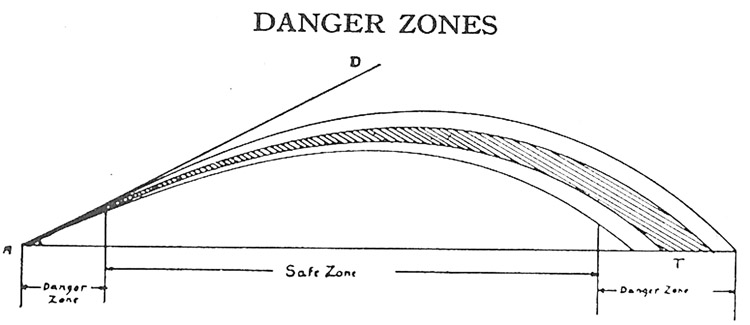
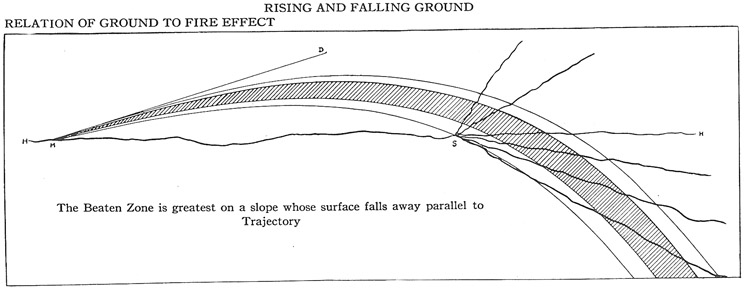


Lining up and advancing forward was how armies fought for millennia. However, World War I was a whole new ball game, where instead of a battalion being grouped together in a 500 yard line, they were now spread out over a line that could be a mile or two long, seriously weakening the fire power of the individual solder. Massive frontal assaults were met with colossal casualties due to the Germans figuring out how to provide support from artillery and interlocking fire from their machine guns. The experienced British sharpshooters were decimated in the first year of the war leaving a gigantic hole in the effectiveness of their army and a whole new generation of green soldiers had to be raised and trained in Kitchener’s Army. New tactics had to be learned and employed – often as “on the job training.”
Machine gunners were elite troops and their weapons were the result of the Industrial Revolution where machines were capable of making machines and machine guns were the weapons of mass destruction of the time. The skill of the machine gunner went far beyond knowing how the gun worked mechanically and being able to diagnose and correct various stoppages to keep the gun in action. Any idiot can pull a trigger. But to use the gun intelligently and effectively, maximizing results by proper use of lessons learned, required a lot of training and a particular skill was needed in understanding the mathematics of geometry and algebra as well as terrain awareness and map reading. “Spray and pray” never was, and never is, the best method of employing a machine gun. Aimed, well placed shots, whether at a target seen or not seen, gets the results.
As can be seen from the terms and definitions provided elsewhere in this article, officers and squad leaders need an array of tools to assist them in working out firing solutions that maximized damage to the enemy while providing protection to their own troops and positions.
Various optical devices were employed as were plotters, quadrants, protractors, clinometers, elevation quadrants and slide rules – all used to provide the gunner with the information needed to effectively employ their weapons. Some devices were attached directly to the gun as either a direct firing device or as an aiming circle. Others were set up on an independent tripod sometimes nowhere near the actual gun emplacement but also serving as an aiming circle or fire director. Angles, heights, depressions, terrain, distances, triangulation, maps – all were necessary tools and skills needed to efficiently and safely engage targets.
There is no need to bore you with the actual mathematics involved in achieving various firing solutions as it varies depending on the firing problem. But there are terms we have all heard such as cone of fire, enfilade, defilade, searching fire, direct fire and indirect fire, etc. What do these terms mean in relation to the use of machine guns? Hopefully, it will provide some clarity to the problems that confront machine gunners.
DIRECT FIRE – is the term used when the target is visible and the gun’s sight can be trained directly on the target. This is what is used for rifle fire.
INDIRECT FIRE – is the term used when fire is directed at a target which is usually invisible without directing the line of sight at the target. An example of this is when the target is behind a hill.
CONE OF FIRE – is the figure formed in space by the trajectories of a machine gun burst directed at a single objective without altering direction of the bore. Due to natural vibrations of the gun, each shot has a slightly different trajectory and over a large distance those trajectories increase in dispersion.
SAFETY ZONES – are that portion of the ground covered by the high part of the trajectory curve.
The angle of safety is the angle between the line of sight to the target and a line short of the target beyond which the point the falling branch of the trajectory curve renders the ground unsafe for friendly troops. The DANGER SPACE is the portion of terrain adjacent to the rising and falling branches of the trajectory curve.
BEATEN ZONE – is the intersection of the Cone of Fire with the surface on which the objective stands. The farther away the target, the larger the Beaten Zone. The 100% zone where the bullets fall, due to the mechanical action of the gun, cannot be greatly altered in size or shape. It can, however, be readily displaced in any direction. Think of a stream of water from a hose. Once set, the size or shape of the stream cannot be altered, but the direction of the stream can be changed.
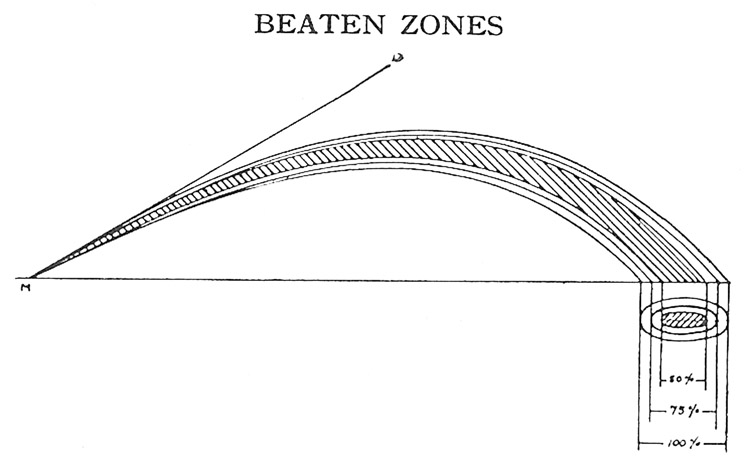
There is a relation between the ground and the effect of fire as to whether the target is higher or lower than the gun. For instance, the Beaten Zone is greatest on a slope whose surface falls away parallel to the trajectory.
DEFILADE – is an obstacle, either natural or artificial of sufficient thickness to intercept projectiles and afford shelter from fire delivered from a given point. DEAD SPACE are portions of the terrain such as fold in the ground or the reverse slope of a hill which cannot be covered with fire delivered from a given point. DEAD SPACE is also called DEFILADED SPACE.
GRAZING FIRE – is fire delivered over the crest of a hill with an angle of fall conforming to the slope of the ground.


PLUNGING FIRE – is fire delivered from a height at a target situated on a horizontal plane beneath.

FIXED FIRE – is delivered at a single point. The direction and elevation of the gun is not intentionally altered.

DISTRIBUTED FIRE – is fire whose direction only is altered continually by successively taking aim at a series of lineal points.
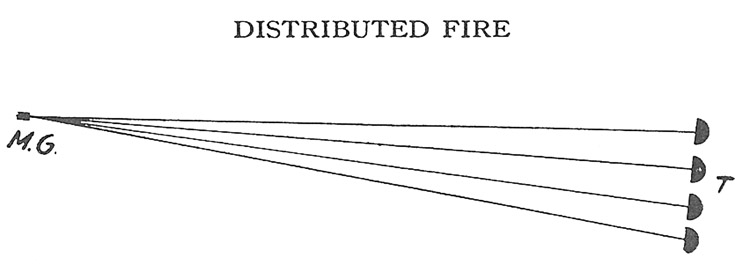
SWEEPING FIRE – is fire whose direction is shifted rapidly without aim by swinging the gun loosely on its traversing mechanism. This is the method used in trench warfare at close ranges for stopping assaults.
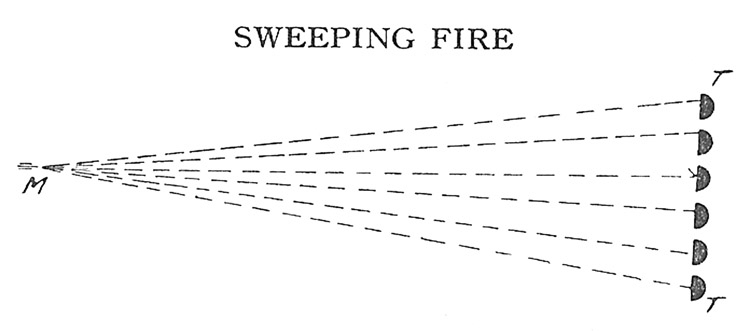
SEARCHING FIRE – is fire whose elevation, only, is altered continually by elevating and depressing the bore of the gun by means of the elevating mechanism. This is the most effective fire that can be delivered from a machine gun, providing the target is suitable – like a column target or an enfiladed line target.
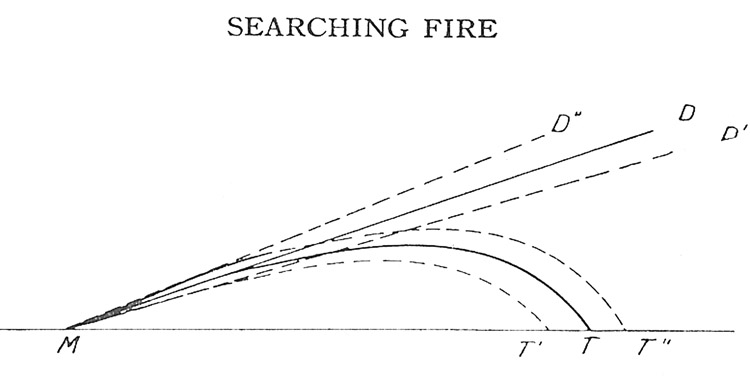
ENFILADE FIRE – is fire delivered from a point in prolongation of the target itself. For instance, the flank of a line of trenches or in prolongation of an advancing line. Machine guns using searching fire while enfilading a charging line is an example of the most effective manner of firing under the most desirable conditions.

OVERHEAD FIRE – is delivered from a vantage point in the second line over the heads of friendly troops or trenches at the enemy target.
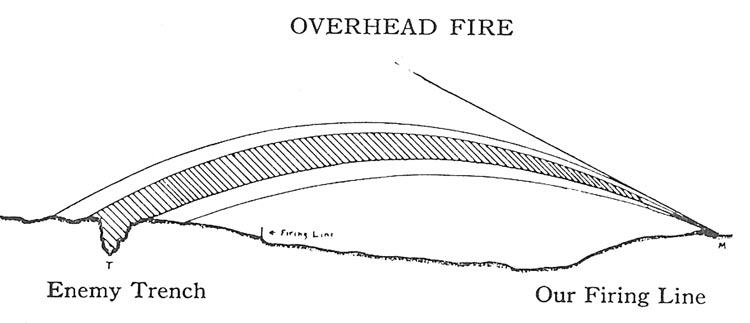
LONG RANGE SEARCHING OR BARRAGE FIRE – is fire delivered at extremely long ranges over the front line trenches to search enemy lines of communication or supply or to form a curtain of fire called a barrage.
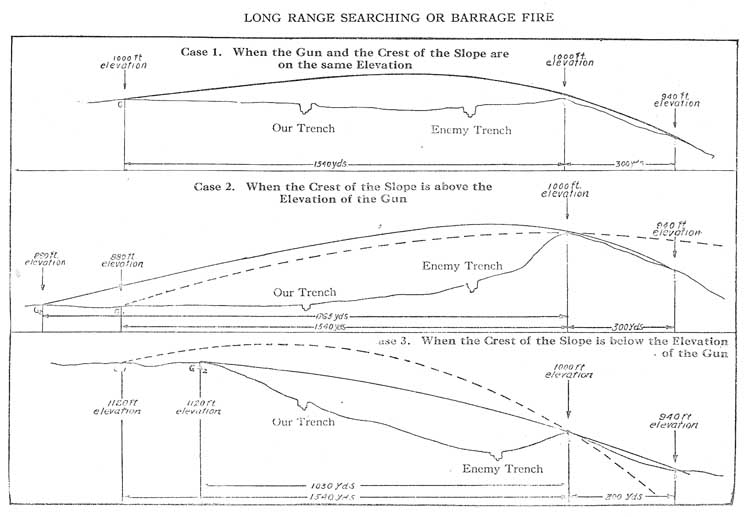
The barrage may be laid down between the friendly trenches and the hostile trenches or laid in the rear of the enemy trenches in order to cut off the supports, etc.
A creeping barrage is one which moves forward by time table or at a stated distance in advance of the leading elements of an attack. A barrage is usually formed by the combined fire of many guns and the firing data secured from accurately contoured maps and forward observers.
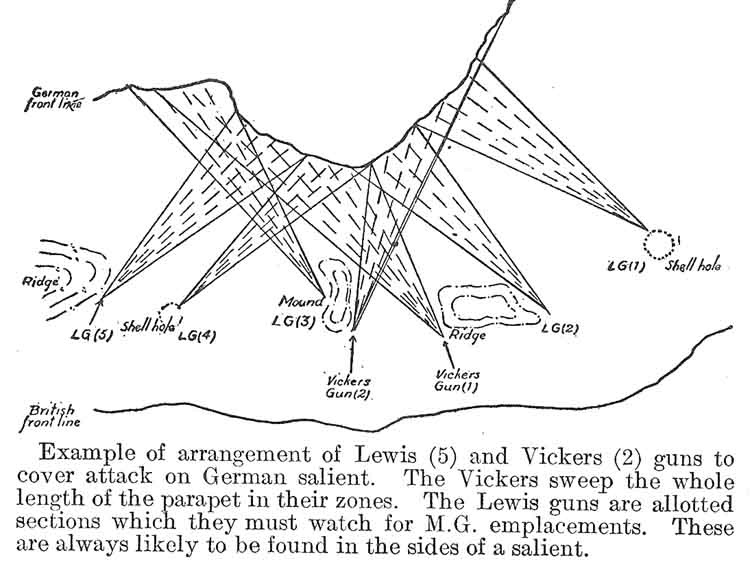
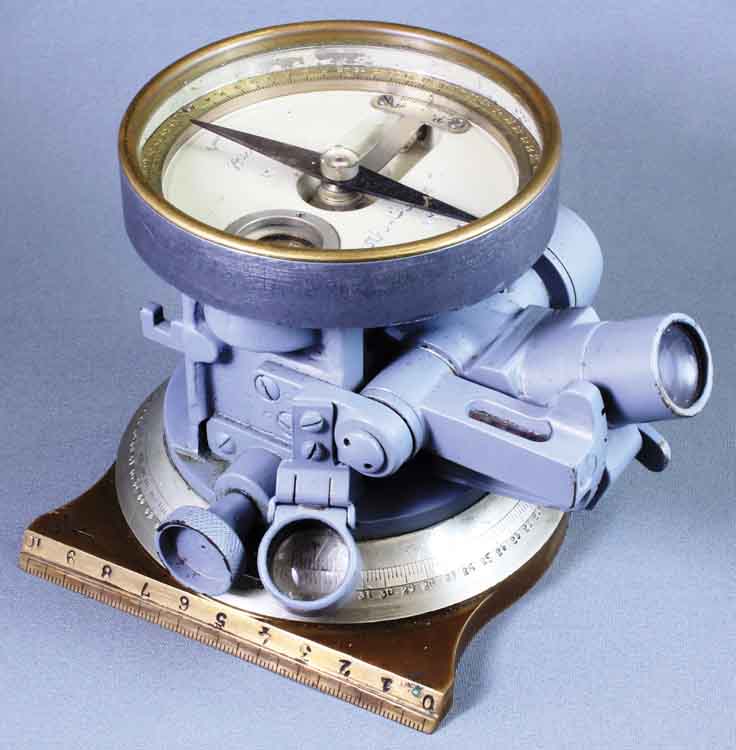
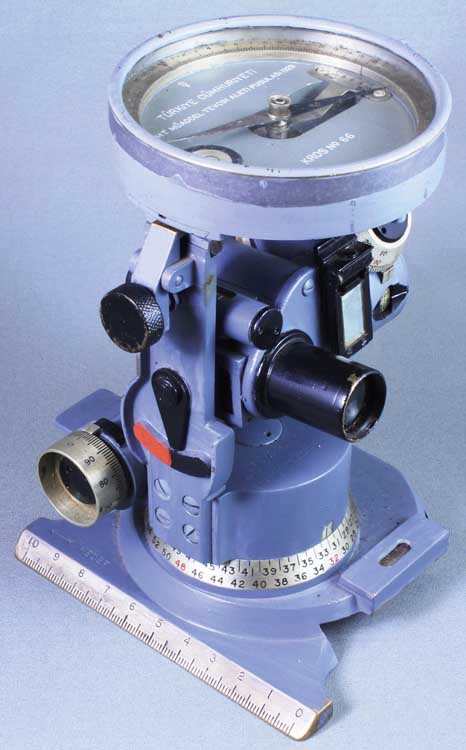
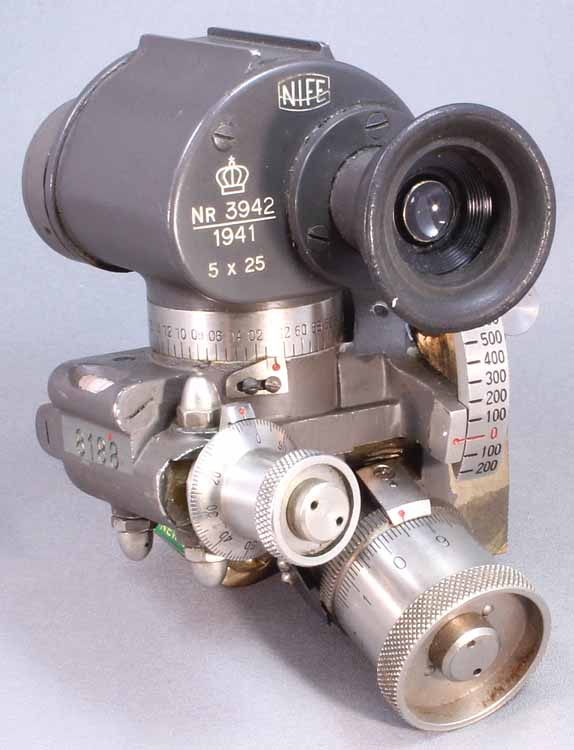
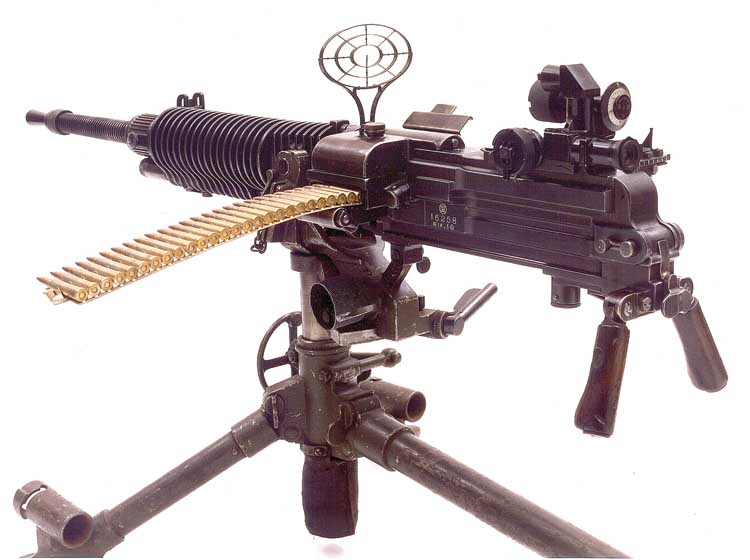











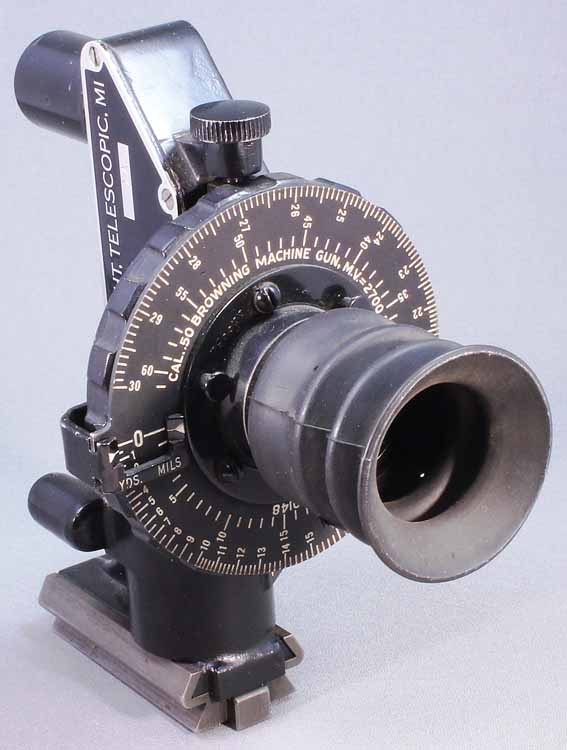
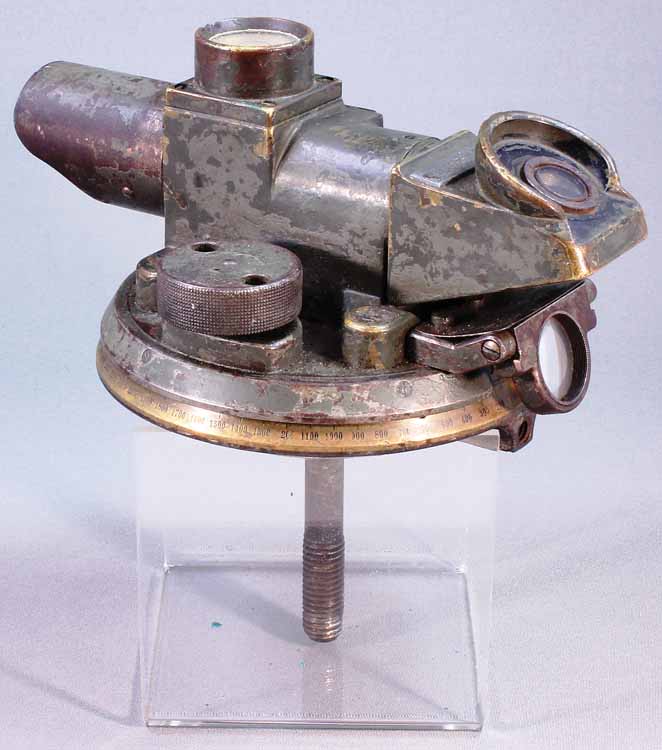
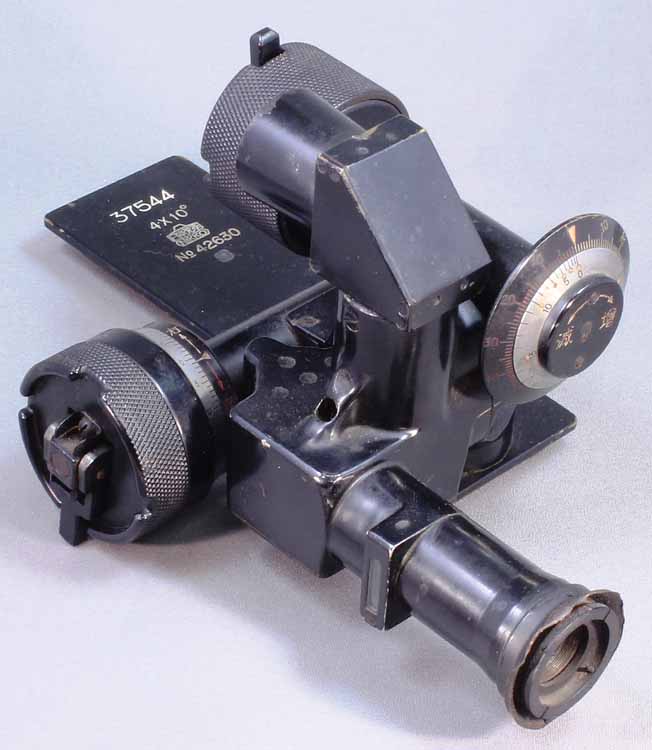









| This article first appeared in Small Arms Review V16N1 (March 2012) |











